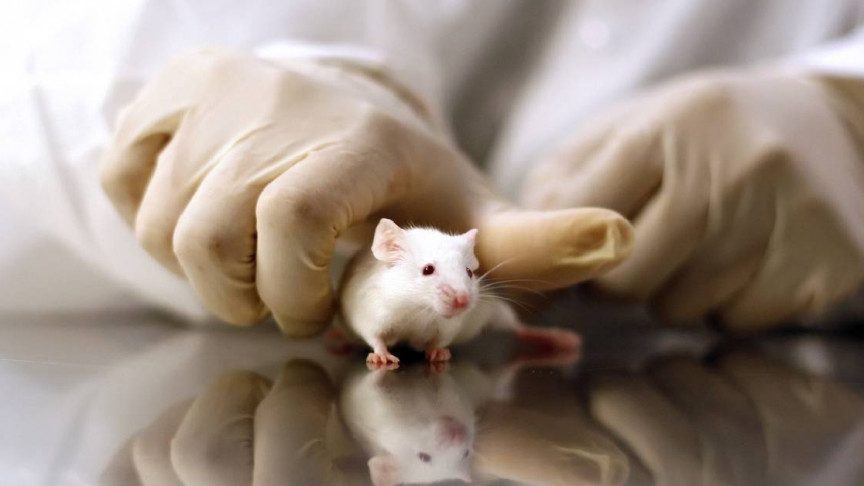A team of scientists from the United States has designed a form of drug that encourages the regeneration of cells and has been able to overturn paralysis in mice that have been dealing with spinal cord injuries. The new drug has been able to help them to walk again in just four weeks of therapy. The new study has been put together by societies from Northwestern University. The team of scientists hopes to move toward the US Food and Drug Administration (FDA) as early as next year to suggest human trials. The lead author of the study, Samuel Stupp has said that the main goal of the study has been to come up with an adaptable treatment that can be used in the clinic to protect people from being paralyzed after suffering major trauma, injury, or disease. Health experts have said that treating paralysis has been a primeval aim of medical science. There are other advanced studies as well that have been launched in the field such as experimental therapies using stem cells to generate new neurons or nerve cells, and gene therapy that trains the body to generate certain types of proteins to help nerve repair or administer proteins. On the other hand, the team of Northwestern University scientists has used nanofibers to imitate the structural design of the extracellular matrix. The extracellular matrix is a naturally stirring network of fragments that surrounds the tissue, which is essential for supporting cells. The outcomes of the new study have been mentioned in the journal known as Science.
The authors of the study have said that each fiber that has been used in the mice model is 10000 times thinner as compared to human hair. These fibers are made up of hundreds of thousands of bioactive fragments that are known as peptides. Experts have said that peptides send out signals to encourage nerve regeneration. Scientists have informed that the treatment has been administered as a gel into tissue neighboring the spinal cords of mice 24 hours after an incision has been performed in their spines. The team of scientists has decided to wait for a day as humans who suffer from destructive spinal injuries from accidents, gunshots, or other trauma as well go through so many hindrances in receiving proper care. The findings of the animal trial have shown that mice that have been treated with the treatment have been able to regain their ability to walk after four weeks of treatment. These mice have been able to walk the same as they have been walking before spinal injuries. However, mice that have not been given the treatment have shown no improvement. Then, the authors of the study have tested the effects of the treatment on the cellular level in mice. They have found significant and drastic progress in their spinal cords. They have seen that severed extensions of neurons that are known as axons have regenerated. They have said that scar tissue that can pose as a major physical hurdle in the regeneration of nerve cells has reduced notably. The study has shown that an insulating layer of axons known as myelin that is vital in sending out electric signals as well has improved. Blood vessels that bring essential nutrients to injured cells have formed and a higher number of motor neurons have been able to survive.
Experts have said that developing a certain mutation in the molecules that have strengthened their mutual motion and amplified their effectiveness has been their key discovery in the study. The lead author of the study, Samuel Stupp has said that the response of mutation in the molecules might be due to receptors found in neurons that are usually in constant motion. He has said that elevating the motion of the curative molecules in the nanofibers assists in binding them more efficiently with their moving objectives. The authors of the study have examined two editions of the treatment. The first version of the treatment has been with the mutation and the second version of the therapy has been without the mutation. At the end of the study, the authors of the animal trial have been able to find that mice that have been given the modified version of the therapy have been able to reclaim more functions as compared to mice that have been given treatment without the mutation. Dr. Stupp has said that the gel that has been developed by his team is the first of its kind.
However, it can be maneuvered in the innovation of medications that are known as supramolecular drugs as the new therapy is an assemblage of multiple molecules rather than a solitary molecule. The team of scientists has claimed that the new treatment is quite safe as the materials can be biodegraded within a couple of weeks and turned into nutrients for cells. The lead author of the trial, Samuel Stupp has said that he hopes to move forward for human trials without any requirement for further animal trials such as the primate model. He has said that nervous systems are very similar among mammal species and at present, there is no effective therapy to treat patients who are suffering from spinal cord injuries and this is a huge matter of concern. As per the official data, nearly 300000 people are dealing with spinal cord injuries in the United States only. The life expectancy of these people is much shorter as compared to people who do not have such devastating spinal injuries and it has not been better since the 1980s. The lead author of the study has said that the issue will be how the US Food and Drug Administration (FDA) views these treatments, as they are quite new.
